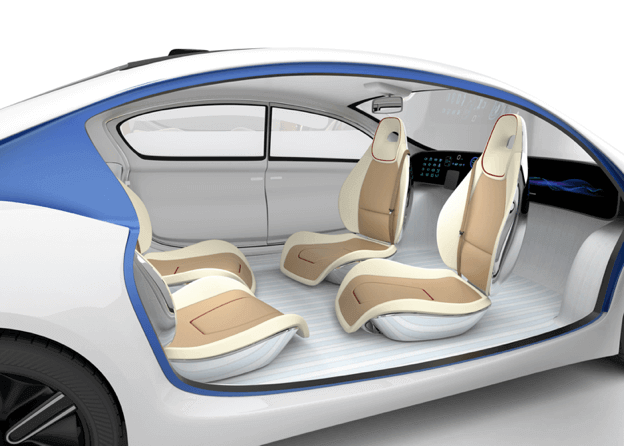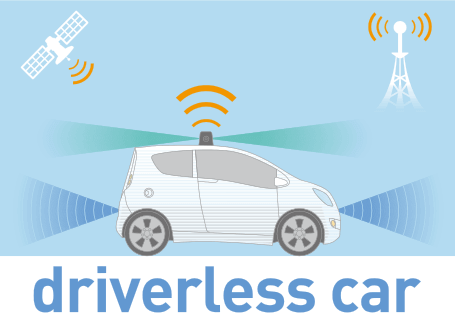
The dawn of the 21st century has introduced us to a plethora of tech-based solutions that are revolutionizing the way we live. In hopes of simplifying tasks, reducing costs and minimizing errors, the brilliant men of this time continue to critique technology and integrate its usage into virtually every aspect of society, turning what was once considered science fiction into a much-needed reality. Indeed, scientists and engineers alike claim that much of this innovation assists in “making the world smaller.” As many envision a more efficient social management platform, the urge to produce such solutions are reinforced by issues seen on an international scale.
Transportation and the population
The world’s urban population is expected to surpass 9 billion by 2050. According to the United Nations fifty-four percent of the global population already live in towns and cities and that number is expected to approach 70 percent by 2050. As the world becomes increasingly urban, cities will face intractable transportation issues. Ambitious efforts to increase capital investment in infrastructure may not be the only solution to solving the problem. Technology will play a crucial role in addressing the increasing demand for transportation within the constraints of infrastructure expansion.
The digital age is flourishing and the sharing economy is already contributing to major trends in transportation. New private mobility services like Uber, Lyft, ReachNow, Car2go are making personal car ownership less attractive. Some studies indicate that users of such services are more likely to sell their vehicle and opt for eco-friendlier means of transit, drive significantly less often or indefinitely delay purchasing a personal automobile. On one end of the spectrum while this translates into reduced road congestion, a healthier environment and improved quality of life, these benefits are often countered with its own unique set of disadvantages. Despite proponents claiming that ride and car sharing services improve many of these issues, there is little evidence to support its theories. In the United States, these service providers along with the western niche for energy-efficient vehicles have not significantly reduced fuel-consumption or greenhouse gas emissions.
On the other end of the spectrum, these services have raised concerns on their impact on traffic congestion, noise, pollution and safety. In 2014, the city of Frankfurt, Germany issued a nationwide ban on Uber and company representatives faced hefty violation fees. New York City Mayor, Bill De Blasio, proposed a cap on new driver licenses issued to companies like Uber that was voted down. Lack of concrete enforcement laws, disparities in vehicle responsibility, acquisition of business licenses and unclear mandates to manage “surge prices” during peak hours are just a few of the legal issues challenging policy markers.
As the past meets the present
A report by the American Public Transportation Association corroborates this by showing people who depend most heavily on shared modes of transportation – including ride-hailing apps like Uber and Lyft, bike sharing, and car-sharing services like ReachNow, ZipCar and Car2Go – are also more likely to rely on public transit.
What this means is that Smart Cities of the future will need an “integrated multi-modal transportation system” that will allow cities to manage, monitor, and optimize across both public and private modes of transportation. And building an efficient multi-modal transportation system will require technology that is on-demand, integrated and autonomous.
Let’s examine each of these in detail.
Role of on-demand in driving transit choices
Smart technology and changing consumer attitudes towards mobility is greatly impacting the way we commute. Already new mobility services like Uber and Lyft have made convenience, flexibility and efficiency key components in consumers’ transit choices. Add to this the costs of running an on-demand vs fixed route service and the math begins to make sense. On-demand running costs are 1/5th – 1/10th of fixed route services costs (Cost of running a bus~$150/hr vs on-demand service~$15/hr)*. Organizations waste a lot of money when they run fixed routes with little to no passengers. On the other hand, on-demand services are more resource intensive. The solution therefore lies in building an integrated mobility ecosystem that can switch between on-demand and fixed route services.
RideCell’s mobility platform helps administrators augment or replace low performing fixed routes with on-demand service that can cost less, and in turn create demand for fixed-route services. The technology can also direct riders to use fixed-route services instead of the more resource intensive on-demand options when the bus is close thereby enabling cities and communities to design their own unique transportation systems.
Creating a seamless travel experience
This brings us to the question: How does one create an integrated system that provides a real time view of public and private transportation services? The answer lies in a “unified mobility operating system” that can combine data from mobility apps, infrastructure operators, transit operators, and sensors into a unified view. RideCell’s dynamic mobility analytics engine provides a real-time, unified and holistic view of the public and private transportation services that constitute the multi-modal transportation fabric of their city thereby allowing cities to make data driven policy, infrastructure, and technology decisions.
Preparing for the future: Autonomous Driving
And finally, investments in automation will undoubtedly be the single most critical factor driving the future of transportation.
 Major players like Google, Tesla, Ford, Baidu and more are already making headways into the autonomous vehicles revolution and analysts predict that the transition to autonomous vehicles will take place in the next decade or so. It is important to note, though, that until now transportation software has required manual operation of dispatch, routing, scheduling, and other operational functions which could lead to an absurd world where a fleet of autonomous vehicles would have to be managed manually.
Major players like Google, Tesla, Ford, Baidu and more are already making headways into the autonomous vehicles revolution and analysts predict that the transition to autonomous vehicles will take place in the next decade or so. It is important to note, though, that until now transportation software has required manual operation of dispatch, routing, scheduling, and other operational functions which could lead to an absurd world where a fleet of autonomous vehicles would have to be managed manually.
By building a platform that enables autonomous operations of transportation services, RideCell is building parity with autonomous driving. RideCell’s proprietary “autonomous fleet operationsTM” technology automates end-to-end business operations from consumer apps to the day to day fleet management, demand and supply analytics, marketing, CRM, and payments. Its mobility software platform can automate some of the hardest operational tasks in running large transportation systems and can optimize and scale them without any human intervention.
The future of transportation is an important topic and creating an intelligent transportation system that improves connectivity, safety and mobility will depend upon how quickly cities and traditional transportation communities align with technology firms and with innovators on advancing transportation. However, this is not something to look forward to in the distant future but is recognized as a reality in present times.
*Sources:
http://uberdriverdiaries.com/how-much-do-uber-drivers-really-make/
Author: Deepti Tiku, Director of Marketing, RideCell


